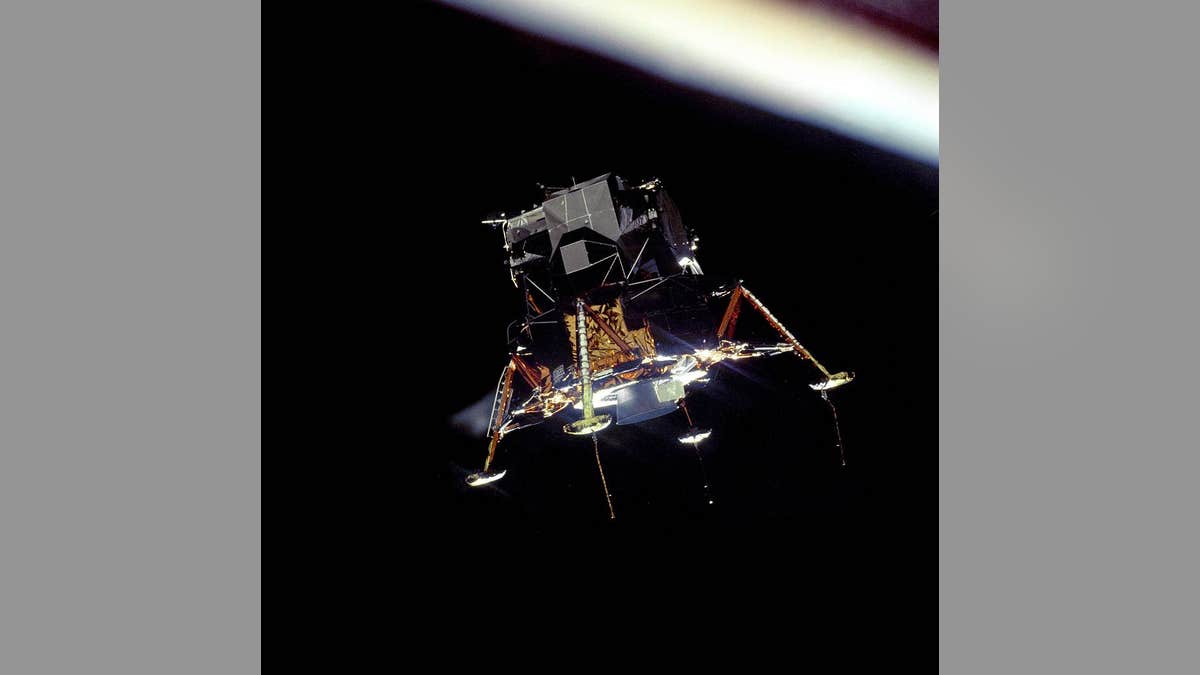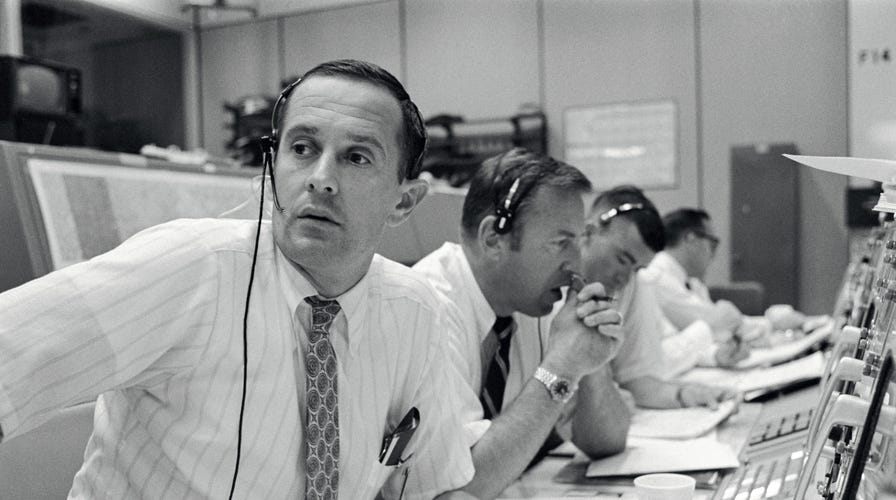Buzz Aldrin’s backup recounts Mission Control during Apollo 11
Astronaut Fred Haise, Buzz Aldrin’s backup for Apollo 11, describes Mission Control during the Moon landing.
On July 20, 1969, Apollo astronaut Fred Haise was at NASA’s Mission Control in Houston when the Eagle lunar module descended to the surface of the Moon.
As the backup lunar module pilot to Buzz Aldrin, Haise was on hand to provide support to the Apollo 11 crew and the army of NASA officials at Mission Control.
“It was tense because this was the real thing now,” he told Fox News, at a preview event for Christie’s auction “One Giant Leap: Celebrating Space Exploration 50 Years After Apollo 11.”
50 YEARS AFTER APOLLO 11, NEIL ARMSTRONG'S SONS DESCRIBE THE DAY THEIR DAD WALKED ON THE MOON
He remembers in particular, the nerve-racking seconds when it looked like the landing might be aborted as a result of a fuel problem.

The Apollo 11 Lunar Module Eagle, in a landing configuration, photographed in lunar orbit from the Command and Service Module Columbia. (NASA)
“It got tenser when the computer alarms came on and, fortunately, very quickly, were declared not enough of a problem to cause an abort,” he told Fox News. “So, obviously, it was a big thing to get that done.”
Haise is still impressed by the teamwork that pulled off the incredible feat of landing on the Moon.
APOLLO 11'S MICHAEL COLLINS REFLECTS ON HISTORIC MOON LANDING: 'WE WERE JUST REGULAR ASTRONAUTS'
“Buzz was there, feeding [Neil Armstrong] the right information he needed to fit with what he was seeing out the window [of the Eagle lunar module],” he said. “It’s really a two-person role, although manually flying the vehicle was up to the commander, but it took the help of two to really make the mission.”

File photo - Spacecraft communicators are pictured as they keep in contact with the Apollo 11 astronauts during their lunar landing mission on July 20, 1969. From left to right are astronauts Charles M. Duke Jr., James A. Lovell Jr. and Fred W. Haise Jr. (NASA)
“And, obviously, in this case, the help of Mission Control to quickly handle those alarms, and have the right people, even in the background, able to dispense with them and get that to not bother the crew,” he added.
Haise famously traveled to space himself on the ill-fated Apollo 13 mission in 1970 and remained in the Apollo program until 1979. Sadly, funding problems thwarted his ambition of walking on the Moon.
Only 12 men, all Americans, have walked on the Moon.
Fifty years on from the momentous events of July 20, 1969, America has its sights firmly on the Moon once again. The U.S. wants to land the next man and the first woman on the Moon by 2024, with an eye towards sending a manned mission to Mars in the 2030s. The astronauts will also be first humans to set foot on the Moon’s South Pole.
Haise said that funding will be key to ensuring that American boots return to the Moon. “If the proper funds are not there to support a proper plan you’re not going to go anywhere,” he said. “That’s what’s key, is how well it’s supported beyond the mandates.”
CLICK HERE TO GET THE FOX NEWS APP
Be sure to catch the America’s News HQ Apollo 11 50th anniversary special on Fox News on Saturday, July 20 at 12 PM EDT.
The Associated Press contributed to this article. Follow James Rogers on Twitter @jamesjrogers





















